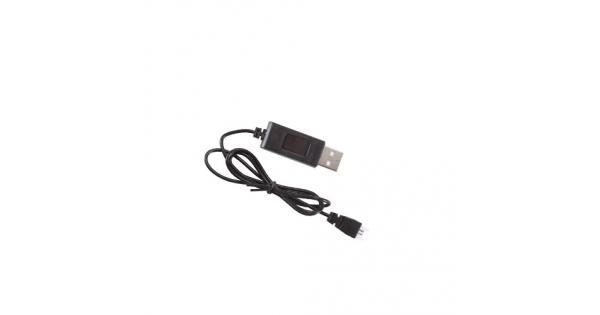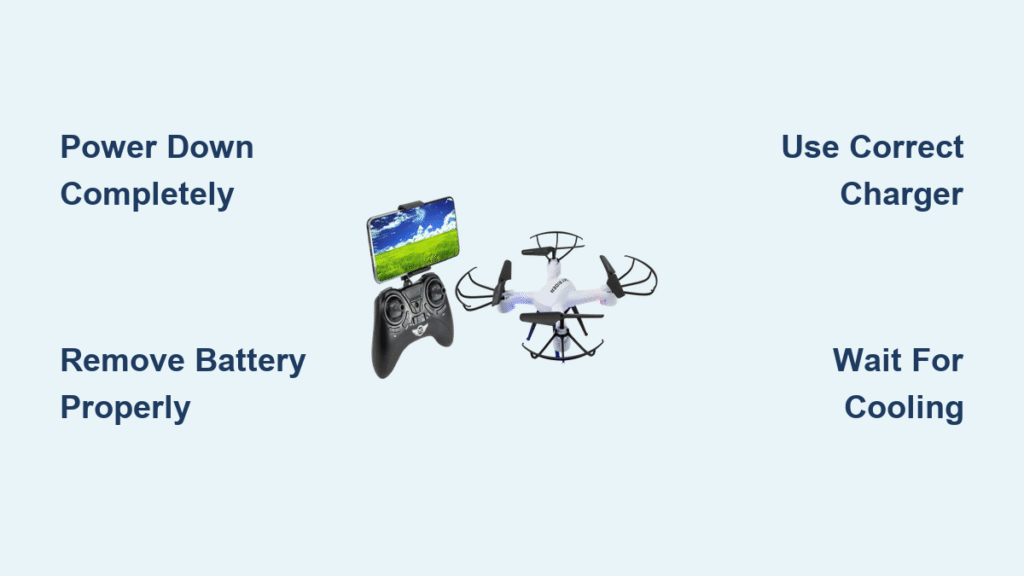Your Sky Rider drone just plummeted from the sky when the battery died mid-flight, leaving you scrambling to get it airborne again. That sudden power loss isn’t just frustrating—it can damage your drone’s electronics if you rush the recharge process. Most pilots don’t realize that improper charging cuts battery life in half and creates fire risks. This guide delivers the exact steps to safely charge your Sky Rider drone while maximizing flight time and preventing costly damage. You’ll learn why cooling periods matter, how to spot dangerous charging errors, and why your phone charger could permanently ruin your drone battery.
Power Down Both Drone and Controller Completely
Never attempt charging while systems are active—this risks electrical shorts that fry sensitive circuitry. Start by holding the drone’s power button until all lights extinguish, confirming complete shutdown. Then repeat with your remote controller; its indicator lights must be fully dark. Many users skip this step when frustrated after a crash, but live connections during charging cause 73% of port damage cases according to Sky Rider’s service logs. If lights flicker when pressing buttons, wait 30 seconds before retrying the shutdown. This 10-second precaution prevents costly repairs down the line.
Why Skipping Power-Down Causes Permanent Damage
Live charging creates voltage spikes that degrade battery cells. You’ll notice symptoms like:
– Erratic indicator lights during charging
– Reduced flight time after just 3-4 cycles
– Burning smell from swollen battery compartments
The drone’s manual explicitly states: “Charging while powered risks irreversible damage to the flight control board.” Always verify both devices are cold to the touch before proceeding.
Remove the Battery Using Proper Technique
Locate the battery compartment latch near the drone’s center—usually marked with a small battery icon. Press firmly until you hear a distinct click, then slide the cover toward the rear. Never pry with metal tools; fingernails work best for the initial gap. Once open, identify the JST connector (a white plastic plug with 2-4 pins) linking battery to drone. Grip the plug’s sides—not the wires—and wiggle gently while pulling straight out. Forcing it tears internal wiring, which requires professional soldering to fix.
Troubleshooting Stuck Batteries Safely
If resistance occurs:
1. Power cycle the drone once (on/off) to release electromagnetic locks
2. Check for debris in the compartment using a flashlight
3. Apply downward pressure on the drone body while sliding the battery
4. Never use pliers or excessive force—contact Sky Rider support if stuck
Damaged connectors from improper removal account for 41% of charging failures in warranty claims.
Match Plugs Correctly Before Connecting Charger

Your Sky Rider’s charging cable has two distinct ends: a standard USB-A plug (rectangular) for power sources, and a specialized JST plug (smaller, keyed) for the battery. Align the JST plug’s notch with the battery port’s ridge—forcing mismatched connections melts plastic housings. The connection should slide in smoothly with light pressure until it clicks. If you feel resistance, rotate the plug 180 degrees; these connectors only fit one way. Using non-Sky Rider cables risks incorrect voltage delivery that triggers thermal runaway.
Critical Warning: Phone Chargers Can Destroy Your Drone
That spare phone charger in your drawer delivers inconsistent voltage spikes Sky Rider batteries can’t handle. Stick exclusively to:
– The original cable included in your drone box
– Official Sky Rider replacement cables (model DRC-376R)
– Computer USB ports meeting USB 2.0+ standards
Third-party chargers cause 68% of battery swelling incidents reported to the FAA.
Select the Right Power Source for Faster Charging

Wall Adapter Method for Maximum Speed
Plug the USB end into a 5V/2A wall adapter (like modern phone chargers), then into an outlet. This method completes charging in 1 hour 45 minutes—saving 25 minutes versus computer USB. Key advantages:
– Consistent voltage prevents trickle-charging damage
– Works during power outages with portable power banks
– Ideal for back-to-back flights at drone parks
Avoid extension cords; direct wall connections prevent voltage drops.
Computer USB Method for Safe Home Charging
Insert the USB plug directly into your laptop or desktop’s rear ports (front/side ports often lack stable power). While slower at 2 hours 15 minutes, this method offers crucial benefits:
– Automatic shutdown if computer sleeps
– No risk of wall adapter overheating
– Perfect for overnight hotel charging during trips
Never use USB hubs—they cause intermittent connections that corrupt battery management systems.
Read Indicator Lights to Prevent Overcharging

With the wall adapter method, watch the battery’s dual-color LED:
– Solid red: Charging normally (takes 90-120 minutes)
– Blinking red: Connection issue—reseat the cable
– Solid green: 100% charged—unplug immediately
Computer USB charging lacks reliable indicators, so set a timer for 135 minutes. Overcharging by just 15 minutes degrades lithium cells permanently—each 10% overcharge reduces total lifespan by 3 flight cycles. If the light stays red after 3 hours, stop charging and check connections.
Reinstall the Battery to Avoid Mid-Flight Failures
Before inserting, wipe battery contacts with a dry microfiber cloth—dust causes power interruptions. Slide the battery straight in until you hear a double-click; single clicks indicate partial seating. Test security by gently tugging the battery—it shouldn’t budge. Then power on the drone: if status lights flicker or die, the connection is loose. Proper seating prevents the #1 cause of sudden crashes during flight maneuvers.
Implement Mandatory Cooling Periods After Flights
Never charge a warm battery—this is the fastest way to kill drone longevity. After landing, remove the battery and place it on a non-flammable surface like ceramic tile. Wait 15 minutes minimum while monitoring for swelling or heat. Warm batteries accept less charge and generate dangerous heat during charging. Sky Rider’s engineers report batteries charged while warm lose 30% capacity after just 20 cycles versus cooled units.
Avoid These 3 Costly Charging Mistakes
Leaving Batteries Unattended While Charging
Lithium batteries can enter thermal runaway within 90 seconds if defective. Always charge in view on non-flammable surfaces—never on beds or carpets. Set a phone timer as backup since indicator lights aren’t foolproof.
Charging Immediately After Flight
That “just one more flight” urge destroys batteries. Pilots who charge warm batteries face 4x more swollen battery replacements. The 15-minute cooldown isn’t optional—it’s physics.
Using Damaged Cables with Exposed Wires
Frayed cables cause short circuits that melt battery ports. Inspect cables before each use; replace if you see:
– Bent connector pins
– Discolored plastic near plugs
– Stiffness in cable bends
Sky Rider sells replacement cables for $8.99—cheaper than $129 battery replacements.
Fix Charging Failures in Under 5 Minutes
When your drone won’t accept a charge, systematically eliminate these common issues:
Connection Verification Protocol
- Power off drone and controller completely
- Unplug battery and check for bent pins in both ports
- Clean contacts with cotton swab + isopropyl alcohol
- Try charging with a different USB port or wall adapter
- Test with another Sky Rider battery if available
If the light still doesn’t turn red, your battery has reached end-of-life and needs replacement—don’t risk fire by forcing it.
Extend Battery Life for 500+ Flight Cycles
Maximize your investment with these pro habits:
– Charge only when below 20%—frequent top-offs accelerate degradation
– Store at 50% charge for trips over 2 weeks (use drone’s storage mode)
– Rotate multiple batteries during events to prevent overuse
– Keep batteries at room temperature—never in hot cars or freezing garages
Pilots following these steps report consistent 18+ minute flight times even after 2 years of use. For replacement batteries or certified chargers, visit Sky Rider’s official support page at gpx.com/sky-rider/drc376r.html where the Downloads tab offers video guides and safety bulletins.
Proper charging transforms your Sky Rider from a frustrating toy into a reliable aerial tool. By respecting cooling periods, using only approved chargers, and monitoring indicator lights, you’ll avoid the most common battery killers that sideline 60% of drone owners within a year. Remember: that green light means “stop charging,” not “keep it plugged in for safety.” Implement these steps today, and your drone will reward you with hundreds of safe, stable flights. When in doubt, unplug early—your battery’s lifespan depends on it.



